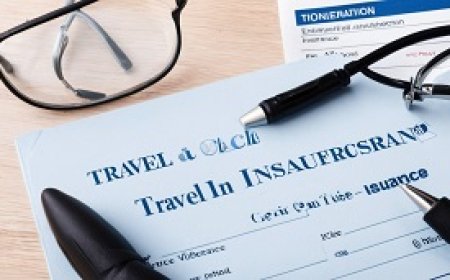Guidelines for Choosing Safe Transportation Methods
Choosing safe transportation methods requires verifying safety and quality, maintaining regular maintenance, selecting the appropriate mode of transportation for the conditions and distance, using personal safety equipment, adhering to traffic rules and general safety regulations, avoiding driving under the influence of drugs or alcohol, determining a safe following distance, learning safe driving techniques, with the aim of contributing to promoting road safety and ensuring safe and reliable transportation for everyone.

Choosing safe transportation methods requires verifying safety and quality, maintaining regular maintenance, selecting the appropriate mode of transportation for the conditions and distance, using personal safety equipment, adhering to traffic rules and general safety regulations, avoiding driving under the influence of drugs or alcohol, determining a safe following distance, learning safe driving techniques, with the aim of contributing to promoting road safety and ensuring safe and reliable transportation for everyone.
Guidelines for Choosing Safe Transportation Methods
A Comprehensive Guide to Ensuring Transportation Safety
1. The Importance of Safety in Choosing Transportation
In this section, we will discuss the importance of prioritizing safety in the process of selecting transportation methods. We will examine how choosing the right mode of transportation impacts both individual and societal safety in general.
2. Key Factors in Choosing Transportation
We will address in this part the factors that should be considered when choosing transportation, such as distance traveled, weather conditions, passenger capacity, maintenance costs, fuel efficiency, and others.
3. Evaluating the Safety of Different Modes of Transportation
In this section, we will provide a comprehensive guide for evaluating the safety of different modes of transportation, including passenger cars, buses, trains, airplanes, maritime transport, and bicycles, along with offering tips for making the right choice.
4. The Impact of Technology on Transportation Safety
We will discuss in this section how modern technology can contribute to improving transportation safety, such as driver assistance systems, automatic braking systems, sensor systems, and others.
5. Prevention Methods and Precautionary Measures
In this part, we will review preventive measures that can be taken to ensure transportation safety, such as regular maintenance, the use of personal safety equipment, and driver awareness of traffic rules and safe driving techniques.
Tips and Guidelines
1. Evaluating the Suitable Means
Before selecting a mode of transportation, it's essential to assess your personal needs and the circumstances of your journey, such as distance and the number of passengers. Look for the means that offer the highest level of safety for these conditions.
2. Regular Maintenance Care
Regular maintenance of your transportation means should be in accordance with recommended schedules by the manufacturer. Inspecting brakes, tires, and lighting systems can contribute to improving vehicle safety.
3. Utilizing Personal Safety Equipment
Ensure the use of appropriate personal safety equipment for the type of transportation you are using, such as seat belts and motorcycle helmets.
4. Adhering to Traffic Rules and Instructions
Compliance with all traffic rules and instructions issued by local authorities is crucial, including adhering to speed limits and intersection rules.
5. Avoiding Driving Under the Influence
Driving under the influence of drugs or alcohol can lead to loss of control over the vehicle and endanger lives.
6. Determining Safety Distances and Avoiding Hazardous Maneuvers
Maintaining a safe distance between vehicles and avoiding hazardous maneuvers that could lead to accidents is essential.
7. Learning Safe Driving Techniques
Drivers should learn safe driving techniques and necessary skills to handle emergency situations and effectively control the vehicle.
By following these tips and guidelines, a higher level of road safety can be achieved, ensuring safe and reliable transportation for everyone.
Optimal Protection for Transportation Users
Optimal protection for transportation users is a subject aimed at ensuring their safety and providing a safe transport environment for them while using various modes of transportation.
1. Developing Safety Technologies
The development of safety technologies is an essential part of optimal protection for transportation users. This aims to design and implement systems and equipment that enhance road safety, such as automatic braking systems, collision warning systems, and driver assistance systems to reduce the risk of accidents.
2. Developing Vehicle Structures
Vehicle structures play a crucial role in providing protection for transportation users. These structures are designed and built to withstand impacts and provide protected spaces for passengers to minimize the risk of injuries in the event of an accident.
3. Developing Personal Safety Equipment
Personal safety equipment includes items such as seat belts, airbags, motorcycle helmets, and others. These equipment are continuously developed and improved to increase their effectiveness in protecting users during transportation accidents.
4. User Awareness and Education
A fundamental part of optimal protection is raising awareness among users about the risks of transportation accidents and how to avoid them. This includes educating them about the use of personal safety equipment, safe driving practices, and respecting traffic rules.
5. Regulation and Enforcement of Safety Laws
Strict laws and regulations play a crucial role in promoting road safety. These laws need to be regulated and enforced strictly to ensure compliance and protect the safety of all transportation users.
6. Data Analysis and Risk Assessment
Data analysis and risk assessment related to transportation accidents are conducted to identify weaknesses in systems and implement necessary improvements to increase safety.
7. Promoting Collaboration and Partnerships
Collaboration between governments, industries, and non-governmental organizations plays a crucial role in promoting road safety and exchanging knowledge, expertise, and implementing best practices in this field.
Public Transportation Safety
Public transportation safety is a vital topic aimed at ensuring the safety of passengers and pedestrians during their journeys using various modes of public transportation. Public transportation safety involves ensuring safety in public transportation modes such as buses, trains, subways, trams, and others, as well as ensuring the safety of pedestrians while using these modes of transportation.
1. Regular Maintenance of Transportation Modes
Regular maintenance of public transportation modes, including engine inspections, brakes, lighting systems, and other safety devices, should be conducted to ensure passenger safety and avoid accidents due to mechanical failures.
2. Training and Qualification for Drivers and Operators
Comprehensive training should be provided for drivers and operators on safe driving skills, handling potential accidents, and emergency techniques, so they are qualified to provide safe transportation services for passengers.
3. Provision of Necessary Safety Equipment Inside Transportation Modes
Public transportation modes should be equipped with necessary devices and equipment to ensure passenger safety, such as seat belts, airbags, fire alarm systems, emergency alert devices, and directional signs.
4. Implementation of Emergency Procedures and Evacuation Plans
Evacuation plans and procedures for dealing with emergencies, such as collisions or fires, should be developed to ensure a quick and effective response to ensure passenger safety.
5. Ensuring Easy Access to Public Transportation
Public transportation should be accessible and flexible for all segments of society, including the elderly and people with disabilities, with the provision of supportive means such as dedicated platforms, elevators, and safe pathways.
6. Safety Awareness for Passengers and Pedestrians
Continuous safety awareness should be provided to passengers and pedestrians, including educating them about personal safety practices and safe behaviors while using public transportation and crossing streets.
Traffic Rules and Driving Behavior
Traffic rules and driving behavior are essential components of efforts to ensure the safety of transportation modes and pedestrians on roads. This topic encompasses various aspects aimed at improving driving behavior and compliance with traffic laws.
1. Enhancing awareness of traffic rules
This aspect involves providing awareness and education about traffic rules for both drivers and pedestrians. It includes education about traffic signals, right-of-way rules, and proper behavior in various road situations.
2. Monitoring and enforcing traffic laws
Traffic laws should be strictly enforced to ensure compliance and reduce risks on roads. This includes installing surveillance cameras, intensifying traffic patrols, and imposing fines on violators.
3. Promoting safe driving behavior
Safe driving behavior is a crucial part of road safety. This includes respecting speed limits, coming to a complete stop at traffic signals, and reducing speed in crowded areas or when passing pedestrians.
4. Infrastructure improvements
Improving road infrastructure contributes to enhancing transportation safety, including creating pedestrian pathways, improving road lighting, and designing safe intersections.
5. Providing training and qualification for drivers
Continuous training for drivers should be provided to enhance safe driving skills and understanding of appropriate driving behavior.
6. Technological advancements in traffic safety
Technologies such as driver assistance systems and collision warning systems play a significant role in enhancing traffic safety and reducing road accidents.
7. Encouraging community participation
The local community can participate in efforts to enhance traffic safety through awareness-raising and participation in awareness campaigns and social initiatives.
Prevention and Response Strategies
Prevention and Response Strategies are an essential part of efforts to ensure the safety of transportation on roads. These strategies aim to identify potential risks and take appropriate preventive measures to reduce road accidents and improve the safety of passengers and pedestrians.
1. Developing Transportation Safety Systems
This aspect involves developing transportation safety systems in countries, including improving road design, signage, lighting, providing designated areas for pedestrians and cyclists, and developing public transportation systems.
2. Enhancing Awareness of Traffic Safety
This includes providing awareness and education about traffic rules and the risks of unsafe driving through advertising campaigns, disseminating educational materials in media, schools, and government institutions.
3. Advancing Technology for Traffic Safety
This involves using advanced technology such as driver assistance systems, automatic braking systems, and collision warning systems to improve the safety of drivers and pedestrians.
4. Implementing Warning and Emergency Procedures
Effective warning systems and mechanisms for dealing with emergencies on roads, such as collision and fire accidents, should be provided to reduce injuries and losses.
5. Continuous Analysis and Evaluation
This aspect involves conducting regular analysis of traffic data and evaluating potential risks to identify weaknesses in safety systems and taking necessary measures to improve them.
6. Developing Legislation and Law Enforcement
Updating traffic laws and enforcing them strictly to ensure compliance and adherence to traffic laws contribute to improving driving behavior and reducing road accidents.
Effective Methods for Preventing Road Accidents
Effective Methods for Preventing Road Accidents are an essential part of efforts to ensure the safety of transportation and pedestrians on roads. These methods include a range of measures aimed at reducing the risk of accidents and improving the overall safety of users.
1. Improving Road Design and Infrastructure
This involves designing roads and intersections to enhance visibility and traffic flow, while providing safe pathways for pedestrians and cyclists. It also includes adding barriers and protective bollards to reduce side collisions and protect pedestrians.
2. Enhancing Awareness and Traffic Education
This includes launching public awareness campaigns on road safety, distributing educational materials, and organizing training courses for drivers and pedestrians to increase awareness of risks and promote safe behavior on the roads.
3. Law Enforcement and Effective Enforcement
Strict enforcement of traffic laws and effective enforcement, including imposing fines on violators and revoking driving licenses in cases of high risk, is necessary.
4. Improving Driving Skills and Behavior
This includes providing necessary training for drivers on safe driving skills and promoting positive driving behavior such as adhering to speed limits, using seat belts, and staying focused on the road.
5. Utilizing Advanced Technology in Traffic Safety
This involves implementing technologies such as driver assistance systems, collision warning systems, and early warning for drivers when approaching hazards.
Summary
Guidelines for choosing safe transportation are essential to ensure the safety and comfort of travelers and pedestrians on the roads. These guidelines include directions and advice for selecting transportation methods that provide the highest levels of safety and security during journeys. The topic aims to raise awareness of the importance of safety in choosing transportation and encourage individuals to make the right decisions to avoid risks and accidents.
Sources
1. "Safe Travel Tips" - National Highway Traffic Safety Administration (NHTSA)
2. "Choosing the Safest Vehicle for Your Teen" - Insurance Institute for Highway Safety (IIHS)
3. "Safety Tips for Public Transportation" - Centers for Disease Control and Prevention (CDC)
4. "Safe Travel Tips" - World Health Organization (WHO)
What's Your Reaction?
































































































































































